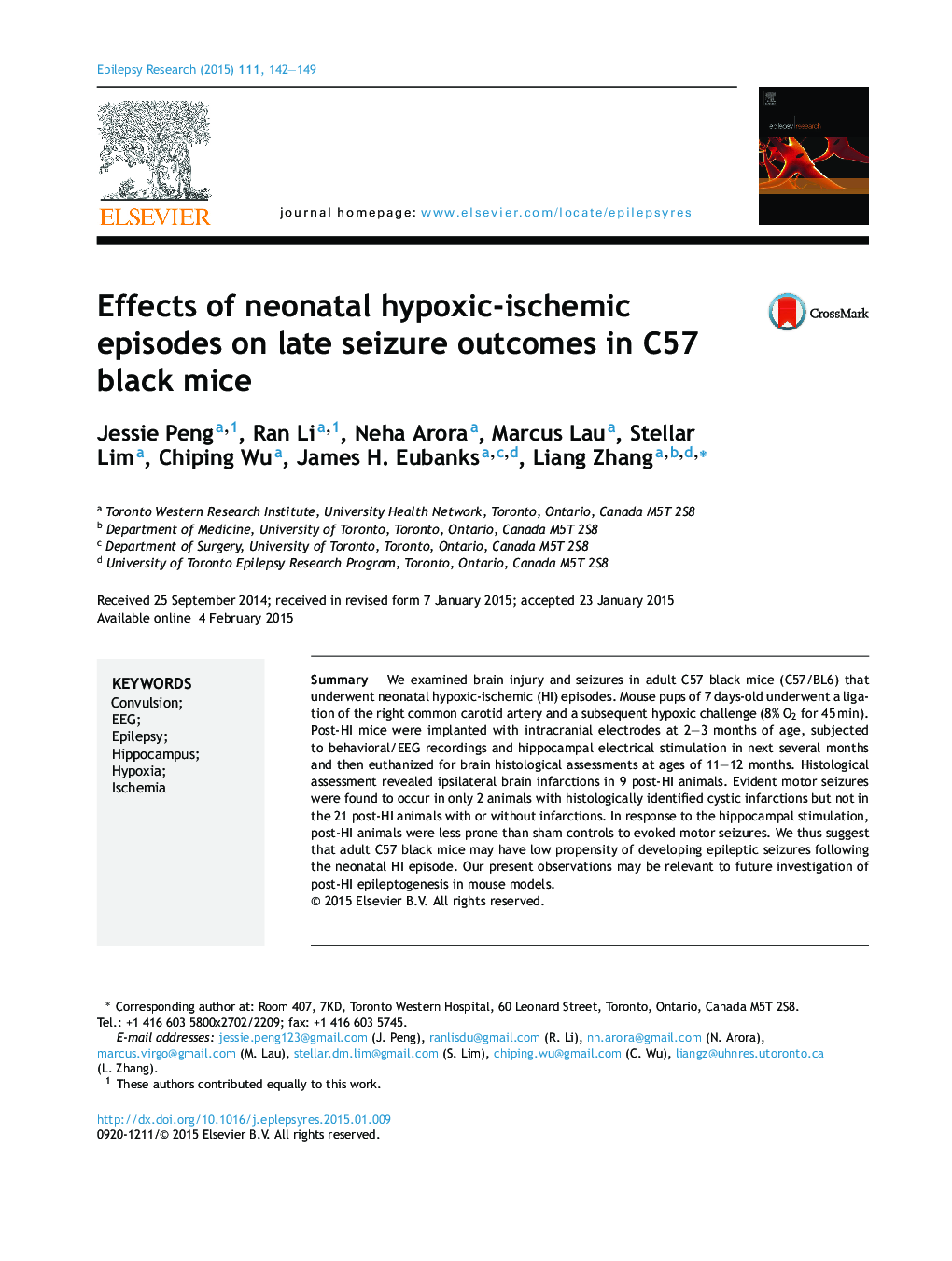| Article ID | Journal | Published Year | Pages | File Type |
|---|---|---|---|---|
| 3052002 | Epilepsy Research | 2015 | 8 Pages |
•We examined seizures in adult C57 black mice that experienced neonatal HI episodes.•Seizures were detected via 10-day video monitoring and intermittent EEG recordings.•Brain injuries were assessed histologically after the video/EEG recording.•Post-HI mice with ipsilateral infarctions showed low incidences of motor seizures.•We discuss factors or limitations related to a low seizure incidence in our model.
SummaryWe examined brain injury and seizures in adult C57 black mice (C57/BL6) that underwent neonatal hypoxic-ischemic (HI) episodes. Mouse pups of 7 days-old underwent a ligation of the right common carotid artery and a subsequent hypoxic challenge (8% O2 for 45 min). Post-HI mice were implanted with intracranial electrodes at 2–3 months of age, subjected to behavioral/EEG recordings and hippocampal electrical stimulation in next several months and then euthanized for brain histological assessments at ages of 11–12 months. Histological assessment revealed ipsilateral brain infarctions in 9 post-HI animals. Evident motor seizures were found to occur in only 2 animals with histologically identified cystic infarctions but not in the 21 post-HI animals with or without infarctions. In response to the hippocampal stimulation, post-HI animals were less prone than sham controls to evoked motor seizures. We thus suggest that adult C57 black mice may have low propensity of developing epileptic seizures following the neonatal HI episode. Our present observations may be relevant to future investigation of post-HI epileptogenesis in mouse models.
Graphical abstractFigure optionsDownload full-size imageDownload high-quality image (123 K)Download as PowerPoint slide
